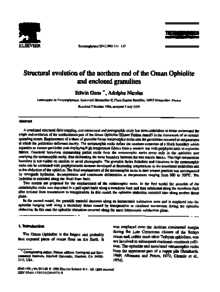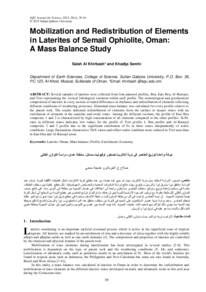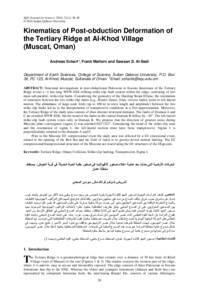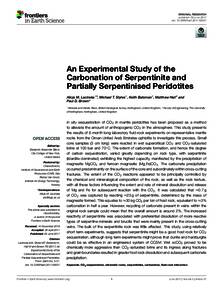Document
Structural evolution of the northern end of the Oman ophiolite and enclosed granulites.
Identifier
DOI: 10.1016/0040-1951(95)00079-8
Source
Tectonophysics. v. 254, 1-2, p. 111-137
Contributors
Nicolas, Adolphe., Author
Country
United Kingdom.
City
Netherlands
Publisher
Elsevier B. V.
Gregorian
1996-03-30
Language
English
English abstract
A combined structural field mapping, microstructural and petrographic study has been undertaken to better understand the origin and evolution of the northernmost part of the Oman Ophiolite (Khawr Fakkan massif) in the framework of an oceanic spreading centre. Emplacement of a sheet of granulite facies metamorphic rocks into the peridotites occurred at temperatures at which the peridotites deformed ductily. The metamorphic rocks define the southern extension of a block boundary which separates an eastern peridotite part displaying high-temperature fabrics from a western one with porphyroclastic to mylonitic fabrics. Granitoid intrusions representing partial melts from the metamorphic rocks occur only in the ophiolitic part overlying the metamorphic rocks, thus delineating the same boundary between the two mantle blocks. This high-temperature boundary is not visible on satellite or aerial photographs. The granulite facies foliations and lineations in the metamorphic rocks can be correlated with porphyroclastic textures developed at decreasing temperatures in the associated peridotites and to the obduction of the ophiolite. The final emplacement of the metamorphic rocks in their present position was accompanied by retrograde hydration, decompression and continuous deformation at temperatures ranging from 800 to 300°C. The hydration is extended along the Wadi Ham fault. Two models are proposed for the emplacement of the metamorphic rocks. In the first model the protolith of the metamorphic rocks was deposited in a pull-apart basin along a transform fault and then subducted along the transform fault after reversal from transtension to transpression. In this model, the ophiolite obduction occurred later along another thrust plane. In the second model, the protolith material descends along an intraoceanic subduction zone and is emplaced into the ophiolite hanging wall along a secondary thrust caused by transpressive or rotational movements during the ophiolite obduction. In this case the ophiolite obduction occurred along the same intraoceanic subduction plane.
ISSN
0040-1951
Category
Journal articles




